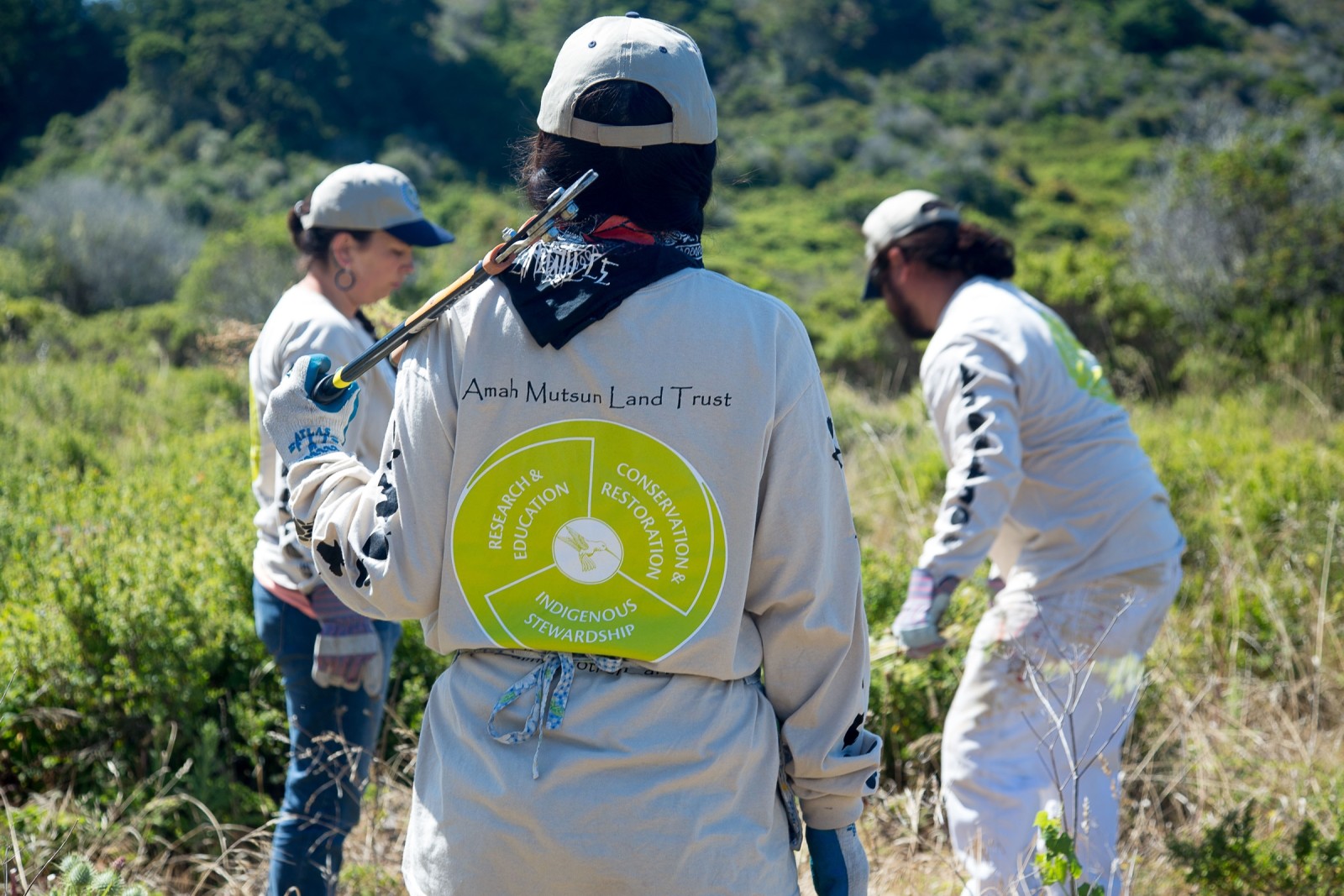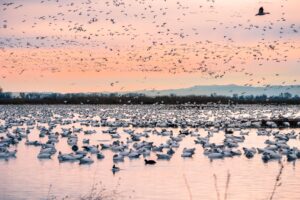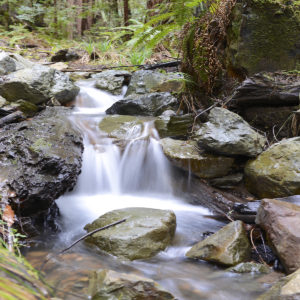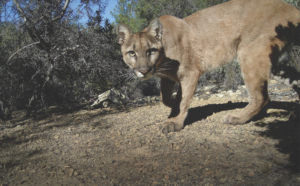Pinnacles: Restoring a Culturally Significant Landscape
Today the Amah Mutsun’s partnership with the National Park Service at Pinnacles is one several projects the tribe is involved with that bring traditional ecological practices to sites in the Santa Cruz Mountains and the inner Coast Range south of San Francisco Bay. The Mutsun projects all occur within traditional territory defined by locations where tribal peoples spoke Mutsun and Awaswas languages; i.e., the greater Santa Cruz/Monterey area up to Año Nuevo on the San Mateo coast and east to the Diablo and Gabilan Ranges. (The Pinnacles area is also home to Chalon tribal people, who are Mutsun speakers.)
Historical impacts have disrupted California Indian lifeways for hundreds of years and reiterating native stewardship on the land has a social justice dimension. Indigenous practices also happen to help restore healthy functioning to degraded ecosystems, and resource managers are eager to learn effective strategies for resilience from tribal people.
In 2009, Lopez and tribal band member Chuck Striplen entered into a Cooperative Habitat Restoration Project with Park Service at what is now Pinnacles National Park. “We saw an opportunity to preserve, protect, and interpret a small, previously unknown riparian landscape,” where traditional plants that had likely been used by the tribe prehistorically had persisted, Brunnemann said. “Our joint effort to document and preserve this remnant micro-landscape gave the public the opportunity to learn more about the Amah Mutsun than could be found in most mainstream literature.”
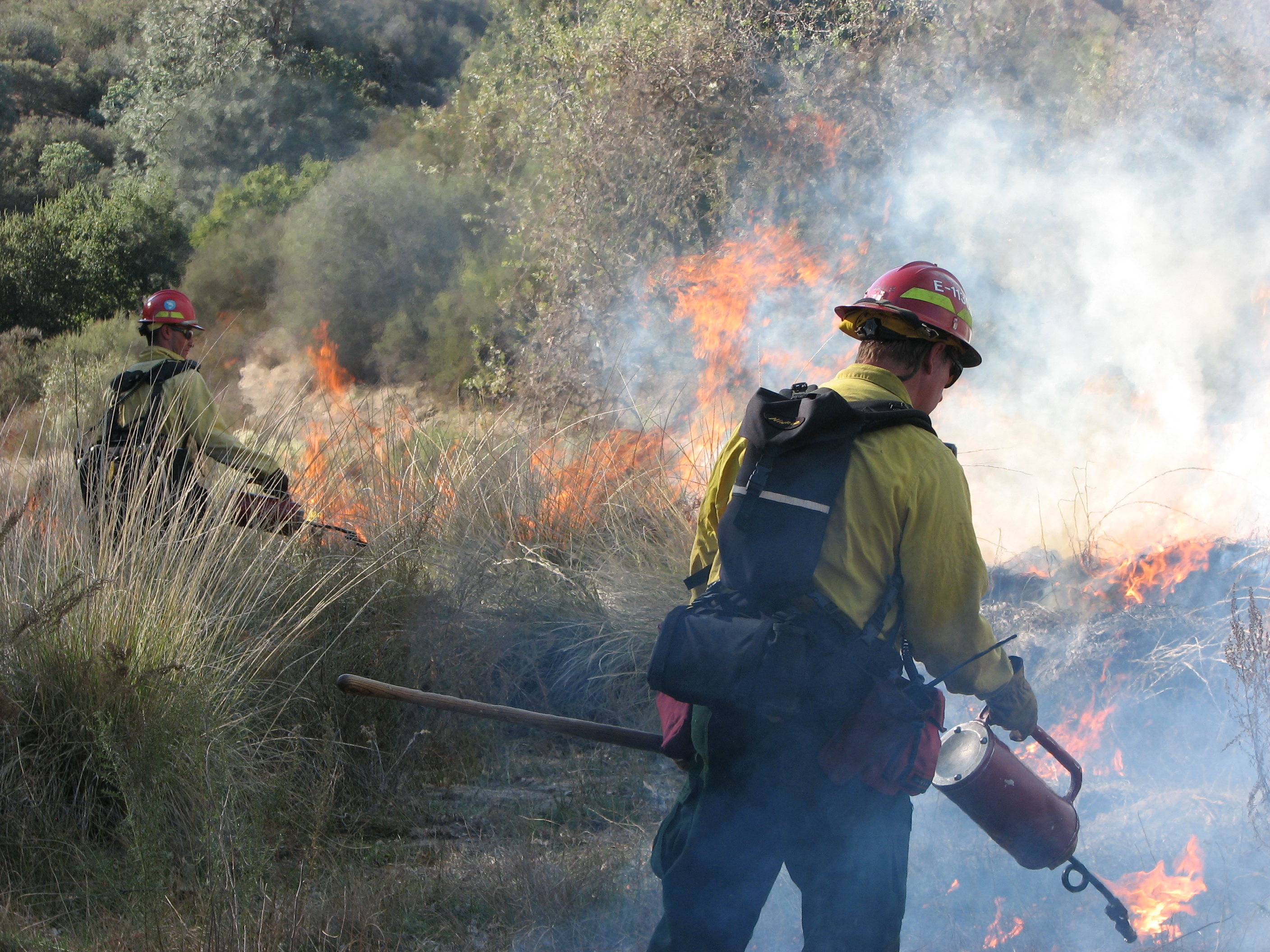
A primary goal of the cooperative project is to restore culturally significant vegetation to an area that has been changed and changed again over the past several hundred years. Having historically tended white root sedge (Carex barbarae) for use in basketry, tribal members began to meet in a shady canyon each spring to thin and dig around the plants to cultivate long, straight rhizomes. (In recent years, drought has reduced the rhizomes, but Lopez is optimistic that this year’s precipitation will result in healthier growth.) “The deergrass was in horrible shape,” Lopez told me, referring to another species (Muhlenbergia rigens) traditionally cultivated for basketry. Traditional practices involve burning deergrass at low intensities to keep other plants from crowding it and to reduce the deergrass itself, so the remaining plants have room to grow tall and straight. In 2011, Amah Mutsun tribal members joined Pinnacles staff and fire crews to burn a two-acre stand of deergrass.
In addition, the Mutsun have resumed traditional ceremonies at Pinnacles, including rite of passage ceremonies, spring and fall dances, and talking circles with elders on subjects including restoring balance and indigenous knowledge. The Mutsun have also been on hand to share their traditions with park visitors. According to Chairman Lopez, “We give two or three presentations per year. We usually present to the seasonal volunterers and interns as well as at an annual pubic event on the west side. And Pinnacles is one of five release sites for the California condor, a bird with special significance for many Native people, including the Mutsun; it is considered a sacred conveyor of the dead to the afterlife. The Mutsun collaborate with park personnel and volunteers in efforts to sustain and increase a once nearly decimated population of these endangered giants of the sky.
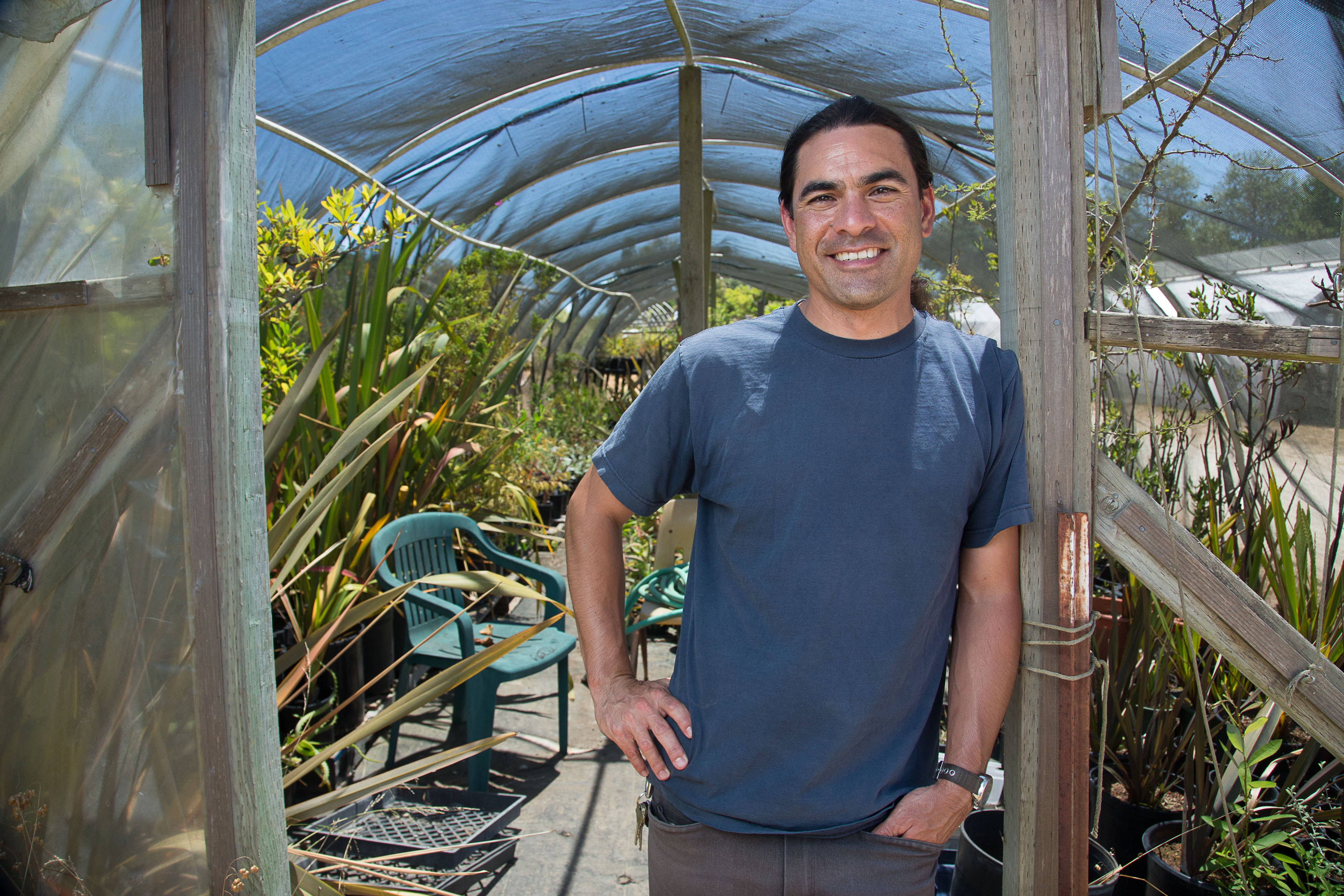
UC Santa Cruz Arboretum: Relearning the Coastal Ecosystem
The Pinnacles cooperative restoration project has also included developing ethnobotanical collections and learning opportunities at the Amah Mutsun Relearning Program at the University of California at Santa Cruz Arboretum. Lopez and Striplen conferred with Rick Flores, curator at the arboretum, about starting a program that would help tribal members regain lost knowledge of plant uses and management. A comprehensive list of traditional plants was assembled by combining research from ethnological notes, oral histories from Amah Mutsun tribal members, and information from neighboring tribes with similar cultures. The centerpiece of the Relearning Program is a 40-acre garden at the arboretum that replicates historical coastal ecosystem zones. Both tribal people and the general public are invited to participate and learn here, using both contemporary and traditional cultivation practices. “I see this work as a form of environmental justice,” Flores told me. Noting that the process of relearning is one way to heal from colonization, he said, “This work is also about the socio-cultural resilience of the Amah Mutsun and serves as a counterpoint to the discourse of historical trauma. They are still here.”
Pie Ranch: A Native Garden for Native Californians
Another co-created project between the Amah Mutsun and local land stewards is a partnership with the nonprofit Pie Ranch in Pescadero, just a few miles north of the Quiroste Valley Cultural Preserve. In 2012, Lopez began conversations with Nancy Vail and Jered Lawson, co-directors and founders of Pie Ranch, which is an “educational farm with values rooted in love and justice,” according to Vail. She and Lawson had concluded that to truly foster connection and healing on the land, “we needed to connect with the people who descended from this place.” So when Lawson and Vail heard about the work the tribe was doing at Quiroste, they invited Lopez to come speak to some of the hundreds of school children who visit Pie Ranch every year to learn about sustainable farming.
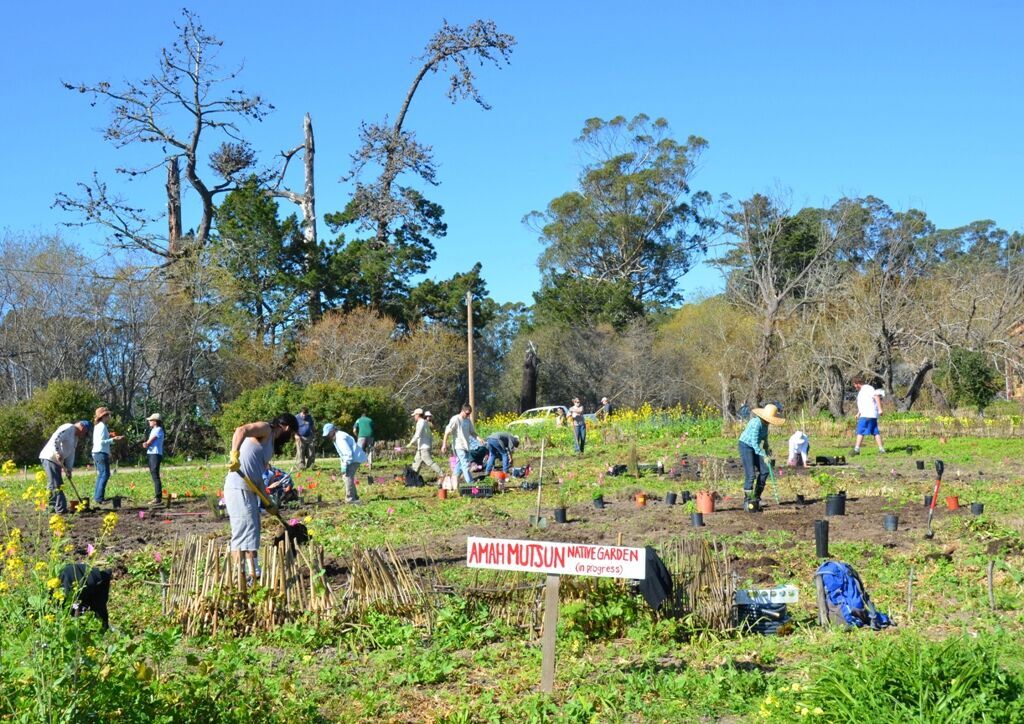
Members of the Amah Mutsun Native Stewardship Corps who were working in Quiroste Valley were also invited to share their knowledge of the ethnobotany of native plants and research on traditional land practices. “As we continued the conversation,” Vail told me, “there was mutual interest in deepening the relationship, by providing space for the tribe to do ceremony and build a Native Garden.” So now the Amah Mutsun have their own plot of land on the farm where they’ve planted medicinal, culinary, ceremonial, and weaving/building plants, arrayed in a circle facing the four cardinal directions. Vail told me she is very much interested in “demonstrating how traditional land stewardship and modern organic agricultural techniques can be woven together,” adding, “it’s all a work in progress.”
Midpeninsula Regional Open Space District: The Mountain of the Hummingbird
Perhaps the most poignantly resonant project the Mutsun are participating in is the restoration of the summit area of Mt. Umunhum in the Santa Cruz Mountains. Located in Santa Clara County southwest of San Jose, Mt. Umunhum rises up 3,486 feet; for approximately 50 years the summit has been identifiable from afar by “the cube,” a monolithic Cold War construction that served as the base for a radar dish from which the U.S. military kept vigilant watch for threats from across the Pacific Ocean until 1980.
While all of Creation is sacred to the Mutsun, Mt. Umunhum is especially so. “We trace our ancestry to Mt. Umunhum,” Chairman Lopez told me. “It’s where we were created, and where we are closest to Creator.” For many years, however, Mt. Umunhum has been off-limits to all but a few military and agency personnel. Responsibility for the area was transferred from the military to the Midpeninsula Regional Open Space District in 2009. Since then the district has been engaged in a herculean planning and remediation process that has already resulted in recontouring the top of the mountain to restore its natural
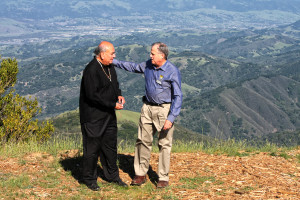
shape, and the widening and repair of a five-mile road to allow public access to the site. Plans are on track to open to the public this fall.
“This is one of the Bay Area’s great peaks,” according to Meredith Manning, Senior Planner at Midpen. “We want people to be able to look out at the incredible view all around them, as they can now on Mt. Tam, Mt. Diablo, and Mt. Hamilton.” In the language of the local tribes, “Umunhum” means “resting place of the hummingbird,” the avian emissary of fire and life for the Mutsun. “Hummingbird brought fire to our tribe,” Lopez told me. “It was a gift from Creator.” The Mutsun creation story recounts that after eagle, raven, and hawk failed, hummingbird successfully wrested fire from the underground badger people. This most tenacious of birds secreted an ember that flamed, and the result flashes in the bird’s throat to this day. The central gift of fire was thus given to the people, with the proviso that it be given back to nature in order to keep the landscape healthy.
The Amah Mutsun have been involved with the Mt. Umunhum restoration effort since its inception. Invited by the district to participate as stakeholders, the Mutsun recommended that plans for the summit site include a place for prayer and ceremony. “We would like Mt. Umunhum to be a destination for all people, a place to pray for healing and renewal, and to give praise and thanks for all Creator has provided,” Lopez told me. Plans are underway for a Native American ceremonial space on the mountain. And who knows, maybe as a hummingbird buzzes past we will be able to watch Creation at its source.

